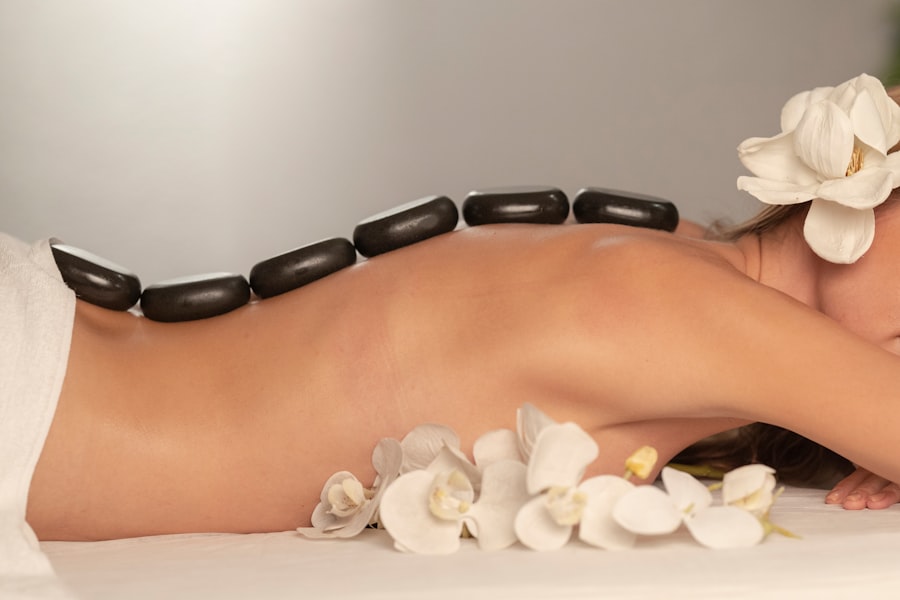When you think of relaxation and rejuvenation, Swedish massage often comes to mind. This popular form of massage therapy is characterized by its gentle, flowing strokes that aim to promote relaxation and improve circulation. Originating in Sweden in the early 19th century, this technique was developed by Per Henrik Ling, who sought to create a method that combined physical exercise with therapeutic touch.
As you experience a Swedish massage, you will likely notice the emphasis on long, gliding strokes, kneading, and circular movements that work to ease tension in your muscles and enhance your overall sense of well-being. The primary goal of Swedish massage is to relax the entire body. The therapist uses a variety of techniques, including effleurage (long strokes), petrissage (kneading), friction (rubbing), tapotement (tapping), and vibration.
Each of these methods serves a specific purpose, whether it’s to warm up the muscles, increase blood flow, or release knots and tightness. As you lie on the massage table, you may find that the rhythmic nature of the strokes helps to quiet your mind and allow you to fully immerse yourself in the experience. This type of massage is often recommended for those new to massage therapy or anyone seeking a soothing escape from the stresses of daily life.
Key Takeaways
- Swedish massage focuses on relaxation and uses long, flowing strokes
- Deep tissue massage targets deeper layers of muscles and connective tissue
- Swedish massage can help reduce stress, improve circulation, and promote overall relaxation
- Deep tissue massage can help with chronic muscle tension, injury rehabilitation, and posture issues
- Swedish massage is ideal for those looking for a gentle, soothing experience, while deep tissue massage is best for those with specific muscle issues or chronic pain
- Swedish massage uses lighter pressure and is more focused on relaxation, while deep tissue massage uses firm pressure and targets specific problem areas
- Consider your specific needs and preferences when choosing between Swedish and deep tissue massage for the best results
Understanding Deep Tissue Massage
In contrast to the gentle approach of Swedish massage, deep tissue massage delves deeper into the layers of muscle and connective tissue. This technique is designed to address chronic pain and tension that may be rooted in deeper muscle layers. If you’ve ever experienced tightness in your back or shoulders that just won’t go away, deep tissue massage might be the solution you’re looking for.
The therapist employs slower strokes and more intense pressure to target specific areas of tension, breaking down adhesions and promoting healing. Deep tissue massage is particularly beneficial for individuals who engage in regular physical activity or those who have experienced injuries. The therapist may use their fingers, elbows, or forearms to apply pressure to specific points in your body, working through knots and tightness that can lead to discomfort.
While this type of massage can be more intense than Swedish massage, many find it incredibly rewarding as it addresses the root causes of pain rather than just providing temporary relief. As you undergo a deep tissue session, you may feel some discomfort at times, but this is often a sign that the therapist is effectively releasing tension and promoting healing.
Benefits of Swedish Massage

The benefits of Swedish massage extend far beyond mere relaxation. One of the most significant advantages is its ability to reduce stress and anxiety levels. As you receive gentle strokes and soothing movements, your body releases endorphins—natural chemicals that promote feelings of happiness and well-being.
This can lead to a decrease in cortisol levels, the hormone associated with stress. By incorporating Swedish massage into your routine, you may find that you are better equipped to handle the challenges of daily life. In addition to its mental health benefits, Swedish massage also promotes physical well-being.
Improved circulation is one of the key advantages, as the rhythmic strokes help to increase blood flow throughout your body. This enhanced circulation can lead to better oxygenation of tissues and improved nutrient delivery, which can aid in recovery from physical exertion or injury. Furthermore, Swedish massage can help alleviate muscle tension and stiffness, making it an excellent choice for those who spend long hours sitting at a desk or engaging in repetitive activities.
Overall, this form of massage offers a holistic approach to wellness that nurtures both body and mind.
Benefits of Deep Tissue Massage
Deep tissue massage offers a range of benefits that cater specifically to those dealing with chronic pain or muscle tension. One of the most notable advantages is its effectiveness in breaking down scar tissue and adhesions that can develop after injuries or surgeries. By applying targeted pressure to these areas, deep tissue massage can help restore mobility and flexibility, allowing you to move more freely without discomfort.
If you’ve been struggling with persistent pain or stiffness, this type of massage may provide the relief you’ve been seeking. Another significant benefit of deep tissue massage is its ability to promote relaxation despite its intensity. While it may feel more intense than Swedish massage, many individuals report feeling deeply relaxed afterward.
This paradox occurs because deep tissue work releases built-up tension in the muscles, allowing for a sense of relief that can be both physical and emotional. Additionally, deep tissue massage can help improve posture by addressing muscle imbalances that contribute to discomfort. As you experience the benefits of this technique, you may find yourself feeling more aligned and balanced in your body.
Who Should Choose Swedish Massage?
Swedish massage is an excellent choice for individuals seeking relaxation and stress relief. If you lead a busy lifestyle filled with responsibilities and deadlines, this type of massage can provide a much-needed escape from the chaos. It’s particularly beneficial for those who are new to massage therapy or may feel apprehensive about more intense techniques.
The gentle nature of Swedish massage allows you to ease into the experience without feeling overwhelmed. Additionally, if you’re looking for a way to enhance your overall well-being without addressing specific pain points, Swedish massage is ideal. It’s suitable for people of all ages and fitness levels, making it a versatile option for anyone seeking a soothing experience.
Whether you’re recovering from a stressful week at work or simply want to indulge in some self-care, choosing Swedish massage can help you unwind and recharge.
Who Should Choose Deep Tissue Massage?

Deep tissue massage is particularly well-suited for individuals who experience chronic pain or muscle tension due to physical activity or stress. If you’re an athlete or someone who engages in regular exercise, this type of massage can help alleviate soreness and improve recovery time after workouts. It’s also beneficial for those who have experienced injuries or have conditions such as fibromyalgia or arthritis that result in persistent discomfort.
Moreover, if you find yourself frequently dealing with tightness in specific areas—such as your neck, shoulders, or lower back—deep tissue massage can target these problem spots effectively. While it may not be as relaxing as Swedish massage, many individuals appreciate the focused approach that deep tissue therapy provides. If you’re ready to confront your muscle tension head-on and seek lasting relief from discomfort, deep tissue massage may be the right choice for you.
Differences in Techniques and Pressure
The differences between Swedish and deep tissue massage lie primarily in their techniques and the level of pressure applied during each session. In Swedish massage, the therapist employs lighter pressure with long, flowing strokes designed to promote relaxation and enhance circulation. The focus is on creating a calming experience that allows you to unwind completely.
Techniques such as effleurage and petrissage are commonly used to warm up the muscles and encourage relaxation throughout the body. Conversely, deep tissue massage utilizes more intense pressure aimed at reaching deeper layers of muscle and connective tissue. The therapist may use their fingers, elbows, or forearms to apply targeted pressure on specific areas of tension or pain.
This approach often involves slower strokes and more focused work on knots or adhesions within the muscles. While both types of massage offer unique benefits, understanding these differences can help you choose the right technique based on your individual needs.
Making the Right Choice for Your Body
Ultimately, choosing between Swedish and deep tissue massage depends on your personal preferences and specific needs at any given time. If you’re seeking relaxation and stress relief without addressing particular pain points, Swedish massage may be your best option. It provides a gentle introduction to the world of massage therapy while promoting overall well-being.
On the other hand, if you’re dealing with chronic pain or muscle tension that requires targeted attention, deep tissue massage could be more beneficial for you. It’s essential to communicate openly with your therapist about your goals for the session so they can tailor their approach accordingly. Regardless of which type you choose, both Swedish and deep tissue massages offer valuable benefits that can enhance your physical and mental health.
In conclusion, understanding the differences between Swedish and deep tissue massages empowers you to make informed decisions about your self-care routine. By considering your individual needs and preferences, you can select the type of massage that best suits your body’s requirements at any given time. Whether you opt for the soothing strokes of Swedish massage or the focused intensity of deep tissue therapy, both options provide unique pathways toward relaxation and healing.
FAQs
What is Swedish massage?
Swedish massage is a gentle type of massage that uses long strokes, kneading, deep circular movements, vibration, and tapping to help relax and energize you.
What is deep tissue massage?
Deep tissue massage is a more intense and focused massage that targets the deeper layers of muscle and connective tissue. It uses slow, deliberate strokes that focus pressure on layers of muscles, tendons, or other tissues deep under your skin.
What are the benefits of Swedish massage?
Swedish massage can help to relax the entire body, improve circulation, and reduce muscle tension. It is also known to be helpful in reducing emotional and physical stress.
What are the benefits of deep tissue massage?
Deep tissue massage can help to relieve chronic muscle tension, improve posture, reduce inflammation, and alleviate pain associated with conditions such as fibromyalgia, arthritis, and muscle spasms.
Which massage is right for me?
The choice between Swedish and deep tissue massage depends on your individual needs and preferences. If you are looking for a more relaxing and gentle experience, Swedish massage may be the right choice for you. If you have specific areas of tension or chronic pain that you want to address, deep tissue massage may be more suitable. It is best to consult with a massage therapist to determine the best option for your needs.
